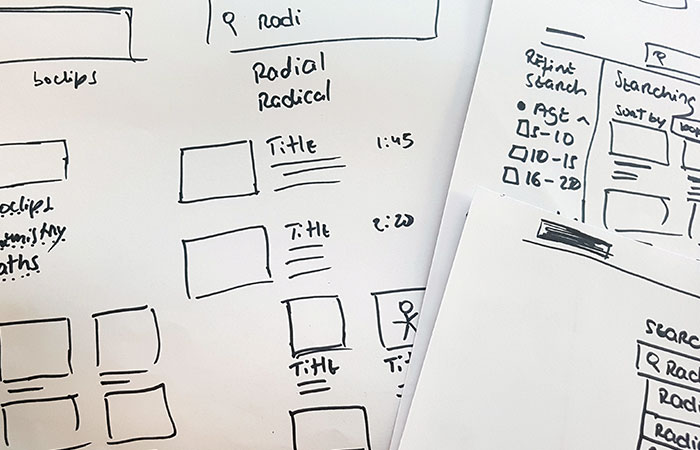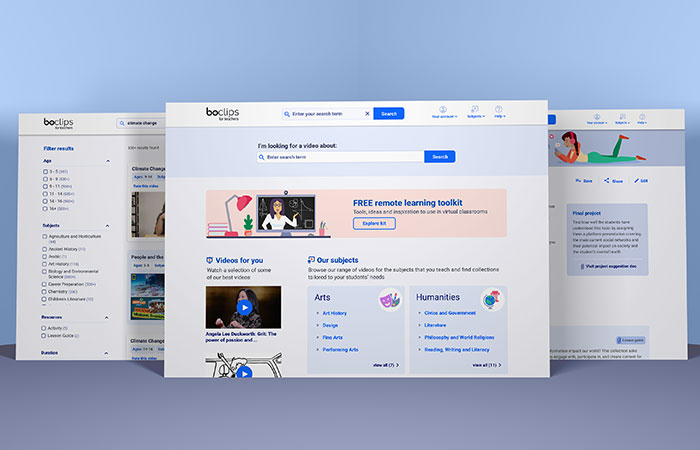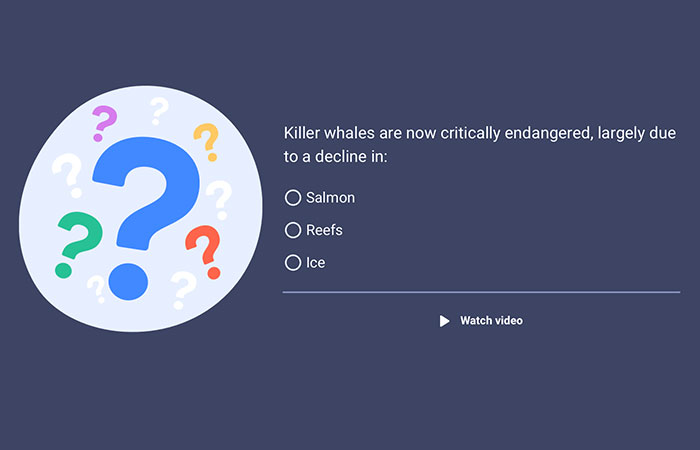It can be hard to tell, but sometimes even the smallest of things can take a surprising time to get right. One such thing was one of the tags in the platform
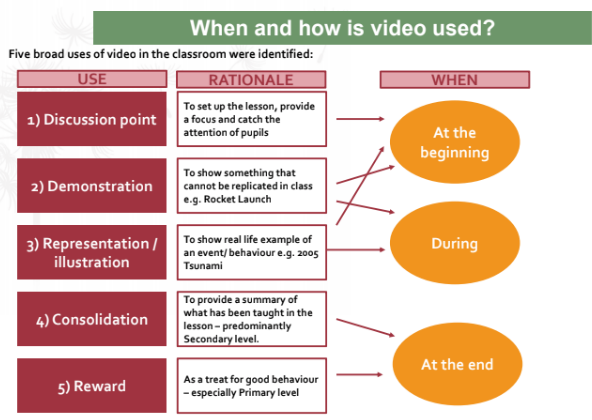
When I started working one of the documents that passed my hands was a piece of research on teachers behaviours that had been done a couple of years before. One of the slides detailing how and when teachers used video in the classroom caught my attention and I wondered if there was a way of associating that type of information to videos and leveraging it in a useful manner. I came up with a tag that would be associated to videos called best for and would be based on how you could use that particular video in class and proceeded to test it with teachers.
Iterating through user testing
At this stage we were still in wireframe/low fi stage only, and for the first round of testing, I went with two different approaches. On the one side I associated the tag with videos directly to get an instant reaction and on the other I tested their expectations by giving them a blank canvas to fill in a filtering screen.
The concept proved a hit with teachers and a clear differentiator that they'd never seen elsewhere so we proceeded to try to refine the wording by showing it to teachers to gather their feedback in a series of interviews.
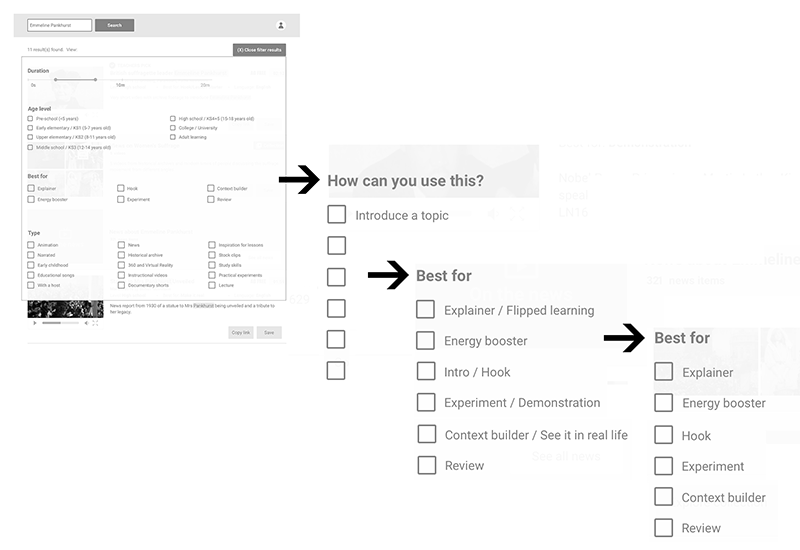
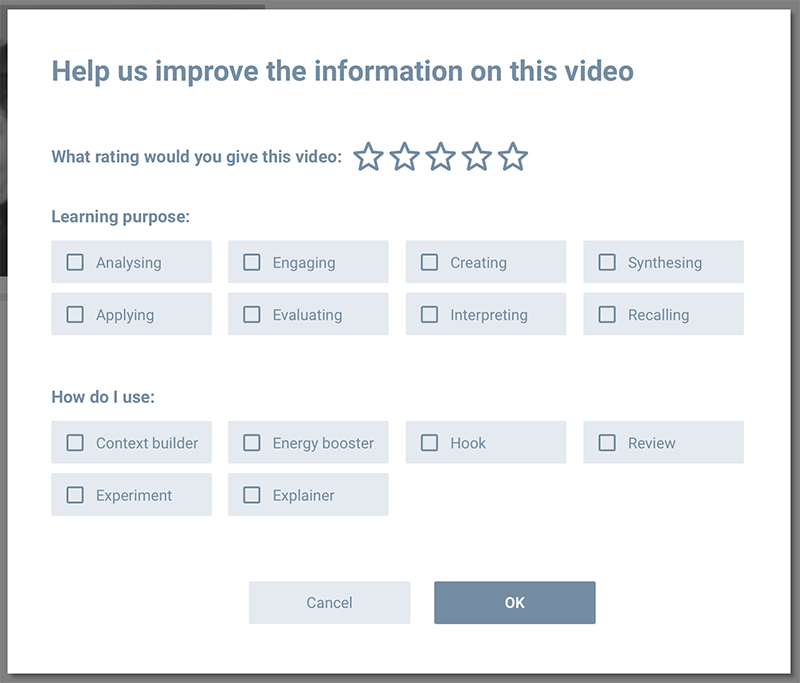
Bloom's taxonomy
It was at this stage that a member of the content team (who was a former teacher) suggested we use the Bloom's taxonomy as a descriptor for this tag. Bloom's a set of three hierarchical models used to classify educational learning objectives into levels of complexity and specificity, covering learning objectives in cognitive, affective and sensory domains. The cognitive domain list has been the primary focus of most traditional education and is frequently used to structure curriculum learning objectives, assessments and activities.
First, we tested a direct swap of the tags we had already coined but apart from one teacher that recognised the use of Bloom's as the basis, all other teachers reacted with a lot less enthusiam than when faced with the previous tags. To be able to put the matter to rest with no doubts we then proceeded to have a direct rumble by having both tags simultaneously in the filtering screen so we could directly measure their preferences. Once again the initial best for tags won with no competition as they didn't find Bloom's nowhere near as useful to use in this context.

Updating the tag on videos
A side challenge that came with the introduction of this new snippet of information, was how to classify and update the company's extensive video library. The obvious solution was to allow the content team to update the videos through the internal backoffice and assign them either on an individual video level or moving a level up video provider level. While both were implemented, a third way devised was to crowdsource this information to the teachers using the platform as well, by showing them a popup after they view a video. This popup was only to be shown once every 2 months as more than this was when the teachers we asked said it would become too intrusive.
